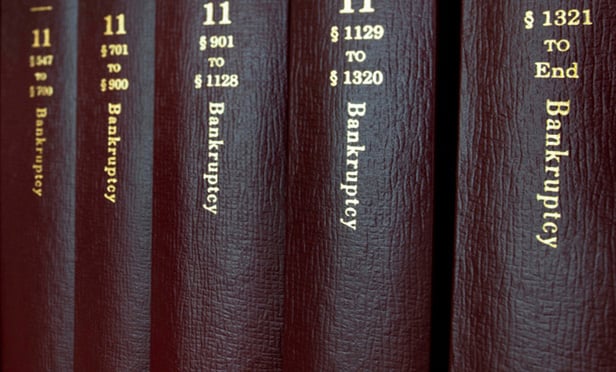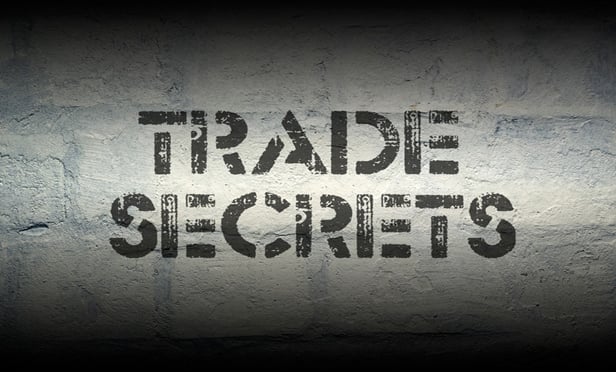Features

UMG v. Grande Communications: Another Victory for the Music Industry in Its Battle to Hold ISPs Liable for Peer-to-Peer File Sharing
Since the advent of the Internet, the music industry has been in a pitched battle to combat online piracy. Initially, the industry focused on shutting down services that offered peer-to-peer or other similar platforms, such as Napster, Aimster and Grokster. For a time, the industry also focused on filing claims against individual infringers to dissuade others from engaging similar conduct. In recent years, the industry seems to have shifted focus toward Internet Service Providers.
Features

Counsel Concerns: Lawyers Battle Over Gears of War Client
A Philadelphia lawyer is suing the founder of a fast-growing litigation boutique over a purported fee-sharing settlement, is arguing that the boutique backed out of the settlement so it could fund other cases against video game makers.
Features

Key Tax and Financial Considerations for New Law Partners
Being asked to join the partnership of a firm is a measure of success as a legal professional. With that achievement comes tax and financial responsibilities that, surprisingly, few attorneys are fully prepared to deal with. These responsibilities include the unexpected individual federal and state and local tax filing and payments.
Features

Five Ways to Maximize Marketing Efforts
With every request for external exposure, there is also an assumption that one effort of marketing will result in millions in new revenue. Yet, we all know that the responsibility to implement all marketing initiatives is on the lawyers.
Features

Don't Set Me Off: No Triangular Setoff Among Affiliated Entities and a Debtor Counterparty
In today's global economy, companies often have multiple business lines operating through separate entities. Outside of bankruptcy, these affiliated operations sometimes transact in a holistic — albeit legally distinct — debtor-creditor relationship with their counterparty. But, as this article discusses, the legal separateness of affiliates can hinder economic protections that a creditor might have otherwise when its counterparty files for bankruptcy.
Columns & Departments

Bit Parts
California Federal Judge Refuses, Among Other Things, to Drop Fiduciary Breach Claim Against AMC Networks over Fear the Walking Dead TV Series<br>New York Appellate Division Decides UMG Recordings Isn't Alter Ego of Cash Money Records<br>
Features

Marketing Tech: Why Should Marketers Care About the Blockchain?
Technology is playing an ever-increasing role in our lives, personally and professionally. One of the emerging technologies that has caught my eye is blockchain.
Features

Mystery Subpoena Case at High Court Could Expand U.S. Authority
Rare Supreme Court holiday activity and ongoing news coverage about special counsel Robert Mueller's investigation has drawn much attention to the enigmatic case of <i>In Re Grand Jury Subpoena</i>. The matter is unremarkable, presenting familiar issues of international litigation. Upon further examination, however, the case may have the potential to expand the authority of United States courts over foreign states and their agencies or instrumentalities.
Features

The DTSA's Jurisdictional Nexus, Three Years In
The Defend Trade Secrets Act (DTSA) requires pleading a connection between a trade secret, a product or service, and interstate commerce. But failure to prove such a connection divests the district court of subject matter jurisdiction. This article summarizes the first three years of cases discussing the jurisdictional element and explores implications.
Features

Management Fees: Make Sure Your Lease Is Clear
There is no uniform approach relating to management fee provisions in leases, and courts will recognize inequities in the charging and payment of management fees when lease terms are ambiguous or a landlord or tenant fails to comply with the terms of its lease.
Need Help?
- Prefer an IP authenticated environment? Request a transition or call 800-756-8993.
- Need other assistance? email Customer Service or call 1-877-256-2472.
MOST POPULAR STORIES
- The 'Sophisticated Insured' DefenseA majority of courts consider the <i>contra proferentem</i> doctrine to be a pillar of insurance law. The doctrine requires ambiguous terms in an insurance policy to be construed against the insurer and in favor of coverage for the insured. A prominent rationale behind the doctrine is that insurance policies are usually standard-form contracts drafted entirely by insurers.Read More ›
- A Lawyer's System for Active ReadingActive reading comprises many daily tasks lawyers engage in, including highlighting, annotating, note taking, comparing and searching texts. It demands more than flipping or turning pages.Read More ›
- The Brave New World of Cybersecurity Due Diligence in Mergers and Acquisitions: Pitfalls and OpportunitiesLike poorly-behaved school children, new technologies and intellectual property (IP) are increasingly disrupting the M&A establishment. Cybersecurity has become the latest disruptive newcomer to the M&A party.Read More ›
- Abandoned and Unused Cables: A Hidden Liability Under the 2002 National Electric CodeIn an effort to minimize the release of toxic gasses from cables in the event of fire, the 2002 version of the National Electric Code ("NEC"), promulgated by the National Fire Protection Association, sets forth new guidelines requiring that abandoned cables must be removed from buildings unless they are located in metal raceways or tagged "For Future Use." While the NEC is not, in itself, binding law, most jurisdictions in the United States adopt the NEC by reference in their state or local building and fire codes. Thus, noncompliance with the recent NEC guidelines will likely mean that a building is in violation of a building or fire code. If so, the building owner may also be in breach of agreements with tenants and lenders and may be jeopardizing its fire insurance coverage. Even in jurisdictions where the 2002 NEC has not been adopted, it may be argued that the guidelines represent the standard of reasonable care and could result in tort liability for the landlord if toxic gasses from abandoned cables are emitted in a fire. With these potential liabilities in mind, this article discusses: 1) how to address the abandoned wires and cables currently located within the risers, ceilings and other areas of properties, and 2) additional considerations in the placement and removal of telecommunications cables going forward.Read More ›
- Guidance on Distributions As 'Disbursements' and U.S. Trustee FeesIn a recent case from the Bankruptcy Court for the District of Delaware, In re Paragon Offshore PLC, the bankruptcy court provided guidance on whether a post-plan effective date litigation trust's distributions constituted disbursements subject to the U.S. Trustee fee "tax."Read More ›
